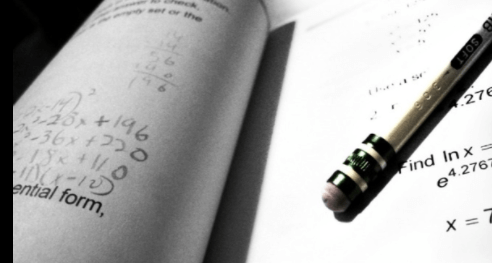Table of Contents
The Common Admission Test, or CAT exam, is a common aptitude test that candidates must pass in order to be considered for admission in MBA programs at India’s 20 Indian Institute of Management (IIMs) and all Business schools across India.
Every year, lakhs of students appear for this computer-based exam, which includes three sections namely, Verbal Ability & Reading Comprehension (VARC), Data Interpretation & Logical Reasoning (DILR), and Quantitative Aptitude (QA).

Quantitative aptitude preparation is regarded as one of the most difficult tasks for CAT aspirants with a non-engineering or non-technical educational background.
Preparing for this section of the CAT can be made a lot easier and more effective if you follow a well-thought-out plan and some of the crucial CAT quantitative aptitude preparation strategies.
On that note, let’s discuss a few crucial tips and topics that will help you as a CAT aspirant ace the section with ease.
Important Topics for CAT Quantitative Aptitude Section
Arithmetic
Percentages, averages, mixture and allegation, time and work, ratio and proportion, and time speed and distance are all covered in this section. In recent CATs, arithmetic questions accounted for roughly 40% of the total number of questions in the Quantitative Aptitude section.

As a result, for better preparation of quantitative aptitude for the CAT exam, the aspirants must have a good grasp of arithmetic questions.
Algebra
Algebra questions cover topics such as linear and quadratic equations, progressions, logarithms, and functions, among others. Algebra questions make up about a quarter of the CAT Quantitative aptitude section.

As a result, algebra is the second most significant topic to study for the CAT Quantitative aptitude portion.
Geometry
Geometry is used to rule the CAT Quantitative aptitude section, with up to 50% of questions coming from this subject alone. However, things have changed a little in recent years. Nonetheless, Geometry still accounts for 20-25 percent of problems in the CAT Quantitative Aptitude portion.
In prior CAT exam papers, around 6-7 questions from topics like triangles, circles, quadrilaterals, and mensuration were featured. To answer these problems, you only need a basic understanding of geometry.
Coordinate geometry and trigonometry are low priority areas among the numerous topics. It should be adequate for the CAT exam if you can spend even an hour on Trigonometry to comprehend the basic ideas and easy applications of those basic concepts.
There isn’t anything else you require. Similarly, Co-ordinate Geometry is made up of a number of formulas, including the Equation of Parabola, distance formula, section formula, equation of a circle and straight line, and so on.
Number system
In the previous decade, questions on this topic dominated the CAT, but presently only 1-2 questions, all of which are about fundamental aspects of numbers, occur in the exam.
Must Read: A Complete Guide for CBAP® Course Certification
Preparation Tips for CAT Quantitative Aptitude
Covering the Fundamentals of all topics
Quantitative aptitude questions may demand many concepts from various topics to enable the aspirant to accurately arrive at the correct answer. Skipping over the fundamentals of any topic will make approaching such questions difficult.
The order in which the ideas should be learned is critical when beginning the study for the CAT quantitative aptitude exam. We have structured the CAT Quantitative Aptitude syllabus into five major areas for our convenience.
For example, before moving to a complex concept like Equation of Ellipse, one must go through distance formula, section formula and equation of a line and others to properly understand it.
Solving Previous Years Papers
Solving this set of previous years’ papers accomplishes two aims. To begin with, it aids the aspirant in comprehending how the questions are constructed to test the ideas. Second, being able to answer these questions gives the seeker psychological satisfaction and motivation.
Taking Sectional/Topic-wise Tests:
Taking sectional and topic-wise tests is a great way to assess one’s ability to apply their knowledge of concepts as well as their speed. After the test, time should be set out to examine your performance.
While going through the performance summary, keep in mind how much you can improve your speed and question choosing skills.
Aspirants can identify their weak and strong areas by taking some good Quantitative Aptitude timed tests.
Must Read:What is the SSAT Flex Test | Updated Guide for 2022











